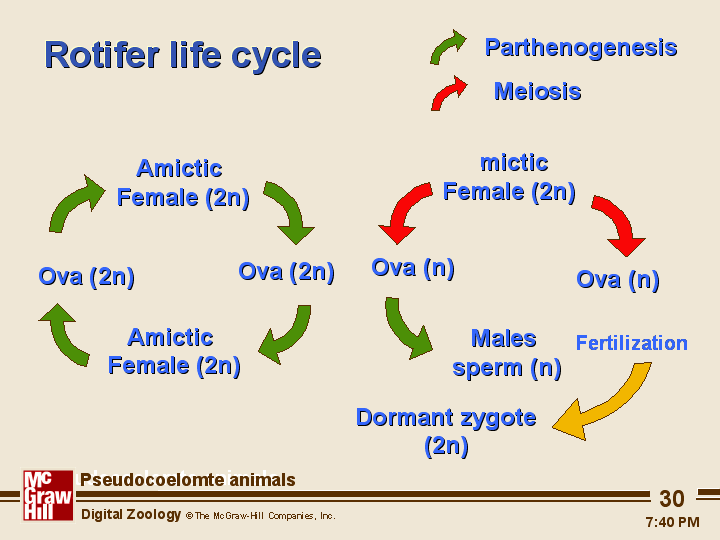
Syndermata: Rotifera and Acanthocephala

Syndermata are considered pseudocoelomate, eutelic (constant number of cells as adults, although cells can change in size), and have separate sexes. For example in rotifers there is a constant number of nuclei that is fixed at hatching (~ 1000 nuclei), with slight variation among species.

Protonephridia are present in some. They may covered externally by a thin, extra-cellular cuticle or glyco-calyx; not shed to grow. Some posses a proteinaceous (keratin-like), peripheral, intra-cytoplasmic, "terminal web" that may be thickened into a lorica. There is a syncytial epidermis. Most internal organs are also syncytial. The body is permeated by a system of canals that can act as a circulatory system.

Rotifera
http://www.ucmp.berkeley.edu/phyla/rotifera/rotifera.html
https://www.earthlife.net/inverts/rotifers.html
http://animaldiversity.org/accounts/Rotifera/
http://cronodon.com/BioTech/Rotifers.html
https://www.youtube.com/watch?v=UNC872Wfa7A
Most are freshwater or found in moist-terrestria environments. They are ciliated, microscopic, mostly microbivores. Rotifers posses a head, trunk and foot regions.

The name "rotifer" is derived from the Latin word meaning "wheel-bearer"; this makes reference to the crown of cilia around the mouth of the rotifer. The rapid movement of the cilia in some species makes them appear to whirl like a wheel. In most species, the head carries this corona (crown) of cilia that draws a vortex of water into the mouth, which the rotifer sifts for food. But be careful, the corona can be retracted, giving the animal a very different appearance. There are also species that lack a corona.
The food itself is ground by the trophi (jaws), located just behind the mouth in the pharynx (throat). Observing a cuticular pharynx with chitinous mastax is a major way to ID rotifers. Pseudocoelomate (hemocoel for circulation and hydrostatic skeleton).
Some have foot with 0 - 4 toes, and a pedal or glue gland. Rotifers are eutelic. They posses fairly well developed musculature for locomostion.


Nervous system consists of bilobe brain. Can see males and females in populations.

Some species produce complex life cycles with eggs produced by mitosis (amictic) and meiosis (mictic).


A particular class of rotifers called bdelloids can be found living in almost all freshwater environments, and occasionally in brackish and marine waters. Bdelloids are known for their remarkable ability to survive drying through a process known as cryptobiosis.